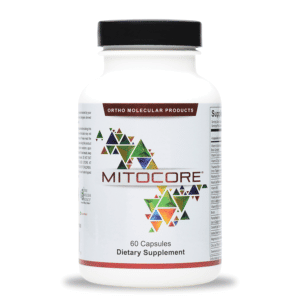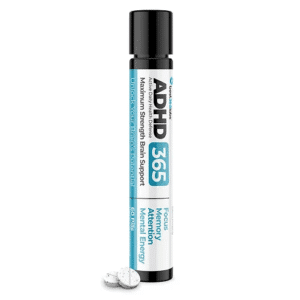Synapsin –Nasal Spray Delivery System for Neurological Health
Synapsin® is an innovative, patent-pending powder blend of ginsenoside Rg3 and nicotinamide riboside, along with components to aid in solubilization and dispersion. These ingredients are designed to be used in the support of neurological and cognitive health.† Synapsin® is commonly used in combination with methylcobalamin in formulations that support neuronal function and cognition.4
SYNAPSIN® FOR TBI & BRAIN HEALTH
Traumatic Brain Injury (TBI) is a leading cause of injury, death, and disability in the U.S.1,2 According to the Center for Disease Control (CDC), approximately 2.4 million traumatic brain injuries were treated in U.S. emergency rooms in 2009, with an estimated 75% occurring as concussions. Of these, approximately 16.5% are associated with a sports-related injury.2,3 A study of nearly 3,000 serious head trauma cases reported that 52% of survivors were moderately to severely disabled at one-year post accident.4
BRAIN DISORDERS
More than one million adults in the U.S. are diagnosed annually with chronic brain disease or disorder, with Alzheimer’s disease being the most prevalent cause of adult-onset brain disorders.5 Research estimates that in the U.S., 35.8% of those 85 or older have moderate or severe memory impairment, and individuals 85 years and older are the fastest growing segment of the population.5
BRAIN FOG
Brain fog symptoms can vary from person to person based on mental and physiological condition(s). Brain fog can cause mild to chronic mental confusion, the inability to focus, and poor memory recall. It can also be associated with autoimmune diseases, lifestyle stress, cancer treatments, aging and more. Brain fog may also be commonly referred to as “brain fatigue” which may be linked to essential nutrient(s) deficiencies.
NEUROPLASTICITY
Neuroplasticity is the brain’s ability to reorganize and create neural connections. As we age, neuroplasticity can decline and an increase in neurodegeneration can occur, with oxidative stress as a major factor. Oxidative stress can be attributed to brain aging and memory impairment and can also be hastened due to environmental and nutritional toxins.
RELATED PRODUCTS
Click any product below for details and to visit our online store.
-

L-Tryptophan 500mg
$52.98 -

GABA Calm
$39.98 -

Stress B-Complex
$20.98 -

Crave Control
$59.98 -

MitoCORE®
Login to Order -

Fusion GABA Calm Pro
Login to Order -

Fusion Methyl B
Login to Order -

Fusion Active Magnesium 60ct
Login to Order -

Fusion Activated Iron
Login to Order -

FusiEnergy 60ct
Login to Order -

FusiEnergy 120ct
Login to Order -

Fusion Active Magnesium 180ct
Login to Order -

ADHD-365 Maximum Strength Brain Support: Methylene Blue
$32.98 -

NeuroPro Plus Mitochondria Health Tablets: Methylene Blue
$50.00 -

FusiBrain
$58.98
additional information
REFERENCES:
- Faul, M., Xu, L., Wald, M. M., & Coronado, V. G. (2010). Traumatic brain injury in the United States: Emergency department visits, hospitalizations and deaths 2002–2006. Retrieved from https://www.cdc.gov/traumaticbraininjury/pdf/blue_book.pdf
- Centers for Disease Control and Prevention (2010). QuickStats: Injury and Traumatic Brain Injury (TBI)-Related Death Rates, by Age Group — United States, 2006. Morbidity and Mortality Weekly Report, 59(10), 303. Retrieved from https://www.cdc.gov/mmwr/PDF/wk/mm5910.pdf
- Centers for Disease Control and Prevention. (1999). Report to Congress: Traumatic brain injury in the United States. Retrieved from https://www.cdc.gov/traumaticbraininjury/pubs/tbi_report_to_congress.html
- Thornhill, S., Teasdale, G. M., Murray, G. D., McEwen, J., Roy, C. W., & Penny, K. I. Disability in young people and adults one year after head injury: Prospective cohort study. The BMJ, 320, 1631–1635. https://doi.org/10.1136/bmj.320.7250.1631
- Federal Interagency Forum on Aging-Related Statistics. (2000). Older Americans 2000: Key Indicators of Well-Being. Retrieved from https://agingstats.gov/docs/PastReports/2000/OA2000.pdf
- Joo, S. S., Yoo, Y. M., Ahn, B. W., Nam, S. Y., Kim, Y. B., Hwang, K. W., & Lee, D. I. (2008). Prevention of inflammation-mediated neurotoxicity by Rg3 and its role in microglial activation. Biological and Pharmaceutical Bulletin, 31(7), 1392-1396. http://doi.org/10.1248/bpb.31.1392
- Bao, H. Y., Zhang, J., Yeo, S. J., Myung, C. S., Kim, H. M., Kim, J. M., . . . Kang, J. S. (2005). Memory enhancing and neuroprotective effects of selected ginsenosides. Archives of Pharmacal Research, 28(3), 335-342. https://www.ncbi.nlm.nih.gov/pubmed/15832823
- Mannaa, F., Abdel-Wahhab, M. A., Ahmed, H. H., & Park, M. H. (2006). Protective role of Panax ginseng extract standardized with ginsenoside Rg3 against acrylamide-induced neurotoxicity in rats. Journal of Applied Toxicology, 26(3), 198-206. https://doi.org/10.1002/jat.1128
- Bieganowski, P., & Brenner, C. (2004). Discoveries of nicotinamide riboside as a nutrient and conserved NRK genes establish a Preiss-Handler independent route to NAD+ in fungi and humans. Cell, 117(4), 495-502. Retrieved from http://www.cell.com/cell/pdf/S0092-8674(04)00416-7.pdf
- Belenky, P., Bogan, K. L., & Brenner, C. (2007). NAD+ metabolism in health and disease. Trends in Biochemical Sciences, 32(1), 12-19. http://dx.doi.org/10.1016/j.tibs.2006.11.006




